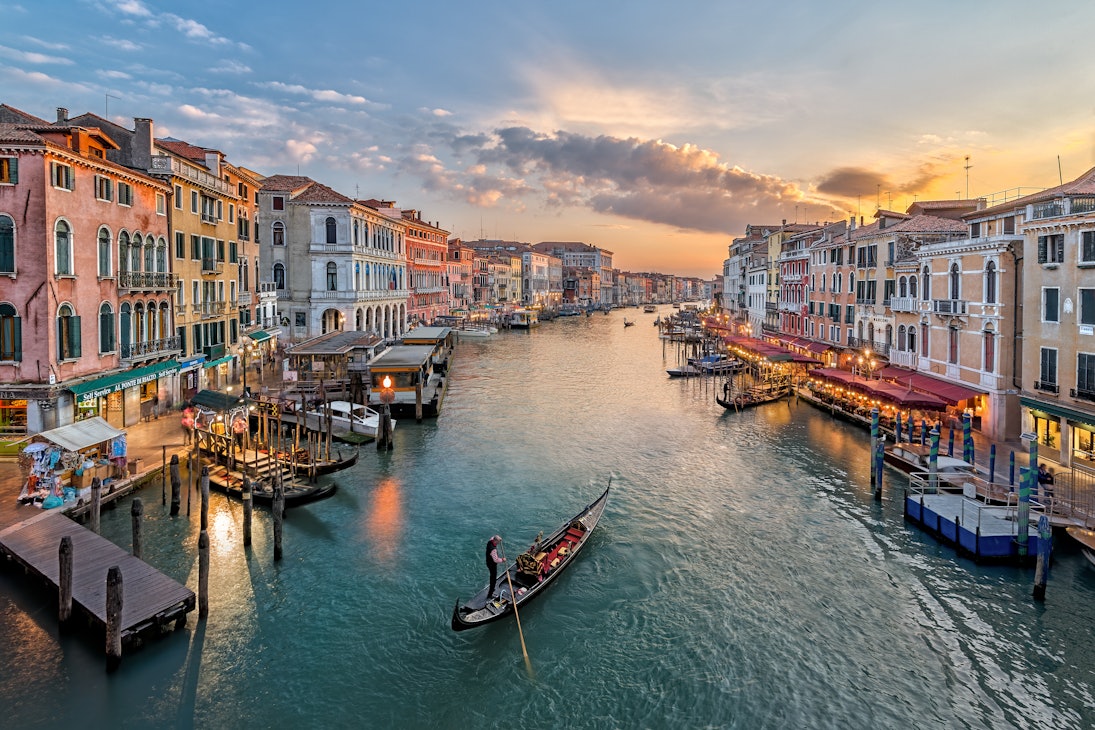
Overview
Imagine the audacity of building a city of marble palaces on a lagoon – and that was only the start.
Meet your new travel partner
Stay connected in Venice
Unlimited data while you travel with Holafly eSIM. Use code LONELYPLANET for an exclusive discount.
Must-see attractions
Planning Tools
Expert guidance to help you plan your trip
Best Things to Do
Go beyond the Rialto Bridge and Piazza San Marco with this guide to the best things to do in Venice.
Read full article
Best Time to Visit
As one of the world's most beguiling destinations, magical Venice is nearly always busy. But we've got the inside track of the best times to visit.
Read full article
Things to Know
From how to dress to which boat to take, everything you need to know for your trip to Venice.
Read full article
Transportation
Everything you need to know about the Venice’s vaporettos, buses, gondolas – and everything in between.
Read full article
Free Things to Do
From world-famous sites to under-the-radar local treasures, here's our pick of the best free experiences in Venice.
Read full article
Best Neighborhoods
Venice is a city of neighborhoods tucked into nooks of their own, offering distinct opportunities to explore and enjoy.
Read full article
Day Trips
Reach mountain heights or taste another region entirely by venturing no more than two hours from Venice on a day trip to these neighboring spots.
Read full article
Money and Costs
Despite a reputation as a playground for the world’s rich, Venice can be surprisingly affordable. Here's how.
Read full article
Traveling with Kids
Car-free, packed with sights (and gelato shops), children of every age will love Venice. Just be mindful of your toddler by those canals.
Read full article
Get a book. Get inspired. Get exploring.
in partnership with getyourguide



















